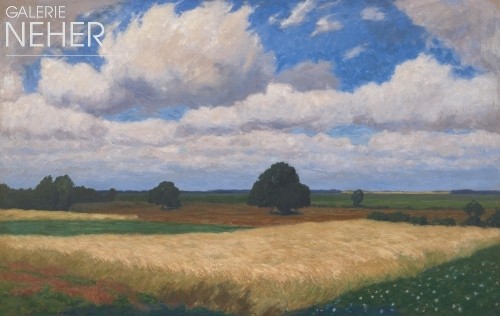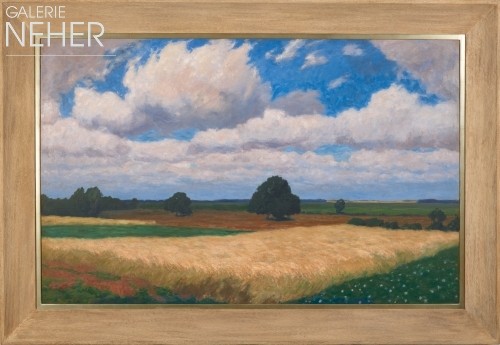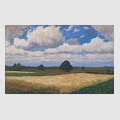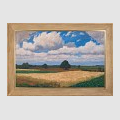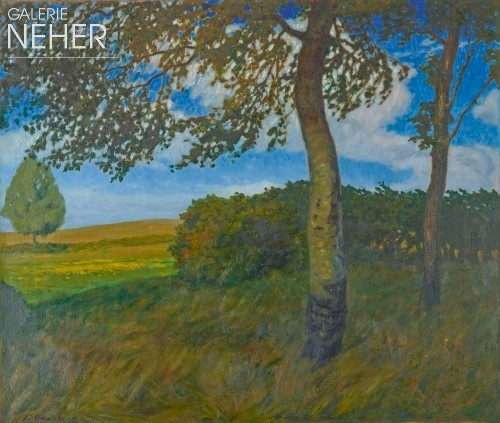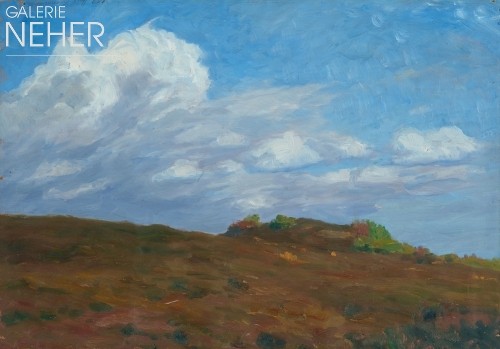Oil on canvas
95 x 151 cm / framed 122 x 177 cm
37 x 59 inch / framed 48 x 69 inch
Signed bottom left "F. Overbeck"
Cat.- Rais. N° 1904/7 with reproduction on page 47
– with handmade craftman’s frame –
N 9356
Expertise:
Expertise Dr. Katja Pourshirazi from January 22, 2019, Overbeck-Museum, Bremen
Provenance:
1909 April/Mai Ausstellung in der Kunsthalle Bremen und Verkauf an einen Direktor C. Jantzen, Bremen
1928 oder später vermutlich Verkauf oder Schenkung des Bildes an die Bildhauerin Marieluise (Marlo) Blaum, Bremen (Rückseitig auf dem Keilrahmen mit Bleistift geschrieben: Marlo zum 15/VII 1928). Es gibt einen Brief im Overbeck Museum von Frau Blaum an Hermine Overbeck-Rohte aus dem Jahr 1933, dass sie die Malerin besucht hatte. Sie spricht sehr begeistert von der Kunst Fritz Overbecks.1963 Sophie Gerdes, Bremen (nach dem Tod von Frau Blaum, laut Testament) (Auskunft von Katja Pourshirazi vom 10.2.2021)
1977 Angebot des Bildes im Graphischen Kabinett, Bremen, und Verkauf an eine Familie Schmidt, Bremen
2000 Verkauf an A. Karstedt (Privatbesitz)
Galerie Luzian, Berlin
Literature:
Sigrid Weltge-Wortmann, Die ersten Maler in Worpswede, Worpswede 1979, mit farbiger Ab. S. 65
Fritz Overbeck 1869–1909. Ich bin nicht sentimental, Ausst.-Kat. Overbeck-Museum, Bremen 2009, Ostfildern 2009, Katatalog Nr. 42 mit farbiger Abbildung.
Catalogue raisonné:
Fritz Overbeck. Werkverzeichnis. Die Gemälde auf Leinwand, 2008, hrsg. von Freunde der Stiftung Fritz und Hermine Overbeck, Bremen 2008, Nr. 1904/7 mit Abbildung Seite 47
Exhibitions:
Keller und Reiner, 1904 (kein Ausstellungstitel)
Bremen, Kunsthalle Bremen 1909 laut Frau Dr. Pourshirazi vermutlich ausgestellt und verkauft
Fritz Overbeck 1869–1909. Ich bin nicht sentimental, Overbeck-Museum, Bremen, 2009, Kat. 42 mit farbiger Abb.
Essen, Galerie Neher, Frühjahr 2020. Kunst aus dem 20. Jahrhundert, Katalog mit farbigen Abb. S. 15
Essen, Galerie Neher, Herbst-Winter 2022/2023, Katalog mit farbiger Abb. S. 7
